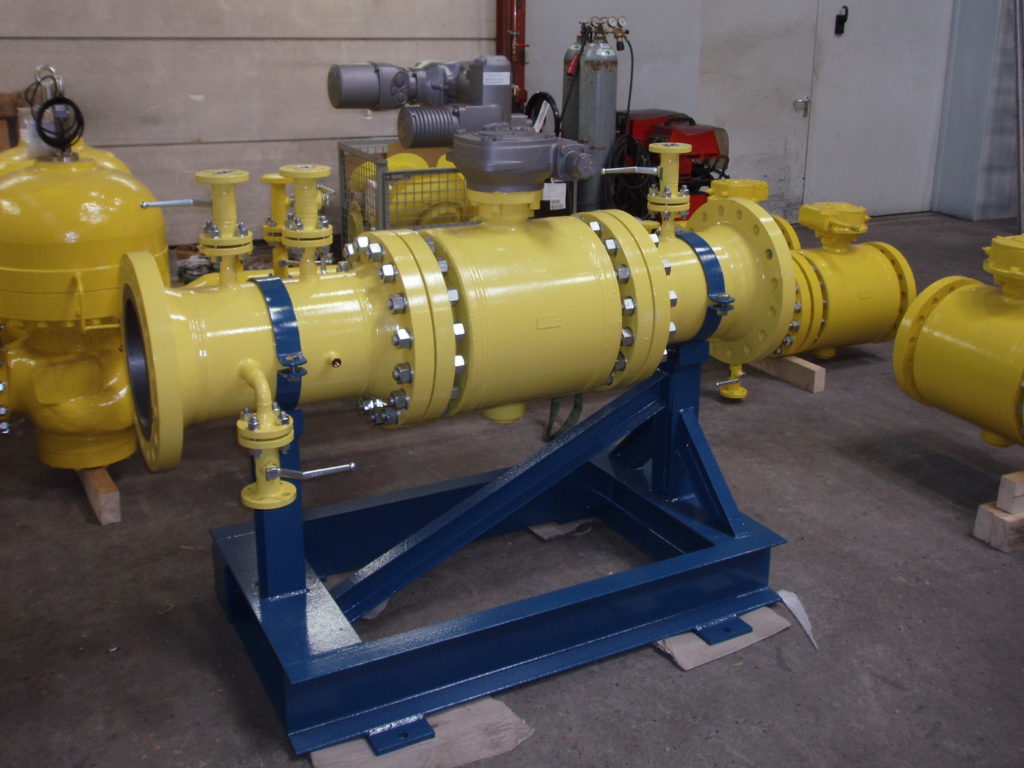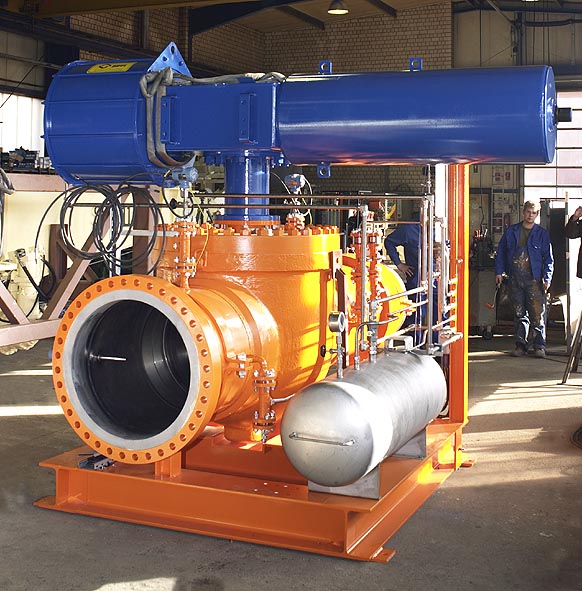General
The emergency shut-down valve (ESD-V) is essential to isolate the fuel gas supply from the pipeline at the boundary of the site in case of emergency. An emergency case can be a leakage, an unacceptable pressure fluctuation within the system, a fire in the plant or other similar occurrences. Ball valves are used as isolation valves in most cases. Different types of ball valves such as trunnion-mounted, floating ball, top-entry, two-piece, three piece etc. can be used.
Dielectric joint
Upstream of the emergency shut-down valve normally an dielectric joint (e.g. insulating flange) is installed, which provides the electric separation of the power plant fuel gas supply system from the main gas network.
Three different variants are used today
- Hand-Operated Isolating Valve
The isolating valve is designed as a hand-operated ball valve. - Motor-Operated Isolating Valve
The isolating valve is designed as a motor-operated ball valve which can be opened/closed from the control room. - Pneumatic-Operated Isolating Valve
The isolating valve is designed as a pneumatic-operated ball valve which can be operated self medium controlled or by instrument air.


Sizes and pressure rating
Pipe sizes
DN 25 – DN 1000
Pressure rating
ANSI 150 / ANSI 300 / ANSI 600 ANSI 900
Main design criteria
Closing time for inlet valve
Pneumatic, electric or hand operated valve
Instrument air or own medium for pneumatic actuator
Insulating flange set (inlet)
Local operation or controlling via control room
Signal exchange with customer
All design criteria, sizes or pressure ratings can be offered on request
